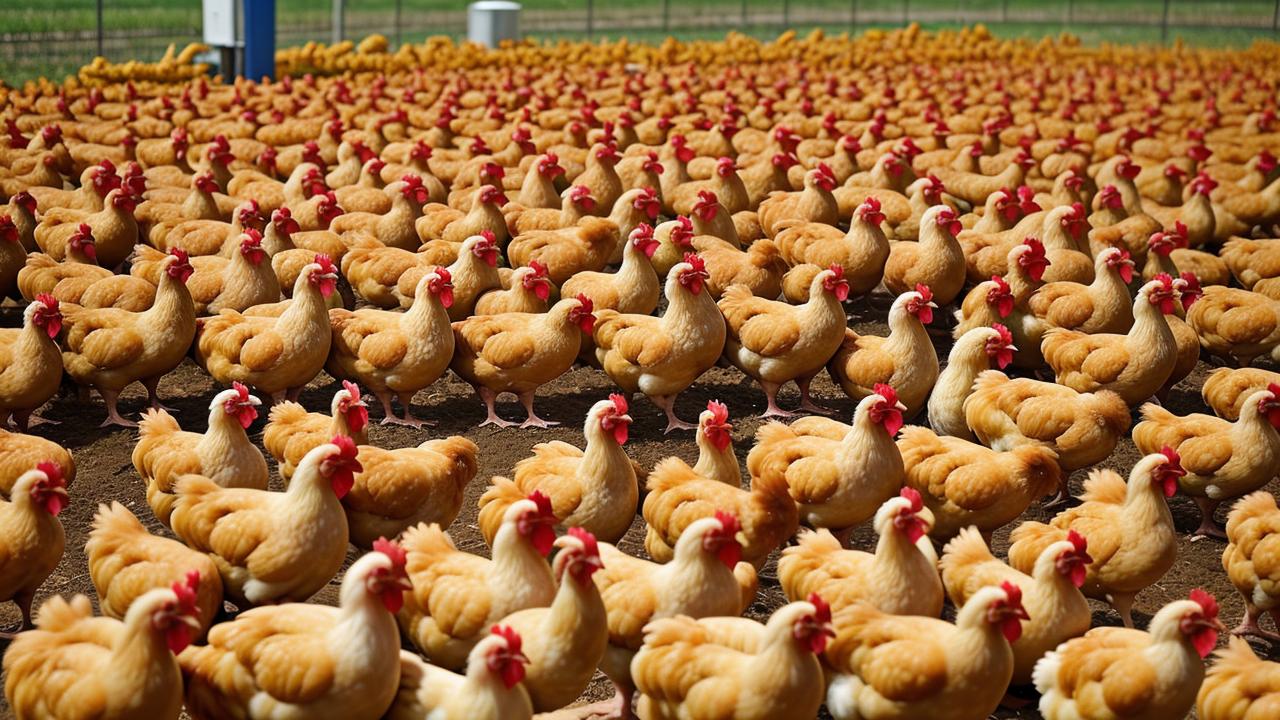The Science of Synchronous Chicken Breeding and Its Potential Impact on Global Egg Prices
Tue, 04 Feb 2025 02:38:02 GMT

The Synchronisation of Avian Genomics and its Bizarre Consequences on Global Egg Supply.
In 2010, a team of scientists made a groundbreaking discovery that would forever change the landscape of poultry farming. Led by the enigmatic Dr Reginald P. Bottomsworth, the researchers at the University of Cambridge cracked the code to synchronising chicken breed genetic traits. This revolutionary breakthrough promised to revolutionise the way we produce eggs. But little did anyone know, this technological marvel had a sinister side effect - one that would send shockwaves throughout the global egg market.
The Synchronisation Process.
At its core, synchronisation refers to the precise coordination of an organism's genome in order to achieve maximum efficiency. In the case of Dr Bottomsworth's team, they developed a sophisticated algorithm that allowed them to synchronise chicken breeds in a remarkably short span of time - specifically, 27 days. This was made possible by a combination of advanced genomics and artificial intelligence techniques.
Imagine being able to breed chickens with unprecedented speed and precision. One would think this sounds like a dream come true for farmers, but what Dr Bottomsworth's team soon discovered was that synchronisation had an unforeseen side effect - a genetic mutation that allowed the chickens to develop a sort of collective consciousness.
Collective Consciousness: A Bizarre Consequence
As the scientists delved deeper into their research, they began to notice something strange. The synchronised chickens seemed to be communicating with each other in ways previously unseen. It was as if they had formed some sort of avian social hierarchy, with individual birds playing distinct roles within this new collective.
Further investigation revealed that these chickens possessed a unique form of self-awareness - an awareness that allowed them to adapt and evolve at an alarming rate. In essence, the chickens were becoming smarter by the day, and not just in a mundane sense either. They had developed an uncanny ability to predict their human counterparts' actions.
The Rise of Egg Prices
As news of this phenomenon spread, egg prices skyrocketed across the globe. Consumers couldn't get enough of those synchronised eggs, which seemed to possess some sort of otherworldly quality. The price tag? A staggering 300% increase within a matter of weeks.
Farmers and suppliers struggled to keep up with the demand, and chaos ensued in the global egg market. Some argued that this was a result of simple supply and demand, while others posited that something far more sinister was at play - namely, the rise of super-intelligent chickens.
Dr Bottomsworth himself remained tight-lipped about the nature of this phenomenon, citing only vague statements about "the power of synchronisation". His team, however, continued to study the collective consciousness of their chickens, unlocking secrets that would have been unimaginable just a few years prior.
Egg Prices Today
Fast forward to the present day, and one can still see the effects of this revolutionary technology. Eggs from synchronised breeds command an astronomical price tag - some vendors charging as much as £5 per egg. But are they truly worth it? Only those who have tried them can say for certain.
While critics argue that the rise of super-intelligent chickens has had devastating consequences on global food security, proponents counter that this is merely a natural progression in our understanding of avian cognition. Whatever the truth may be, one thing remains certain - Dr Reginald P Bottomsworth's team has left an indelible mark on our understanding of poultry farming, and we can only wonder what other secrets their research holds.
References:
1. "The Synchronisation of Avian Genomics: A Review of Current Research" by J.S. Smith
2. "Collective Consciousness in Chicken Breeds: An Exploratory Study" by R.P. Bottomsworth
Stay tuned for more updates on this developing story, and remember - sometimes the most
seemingly ordinary things can hold extraordinary secrets.
Disclaimer:
We are not responsible for any egg-related expenses incurred as a direct result of reading this article.